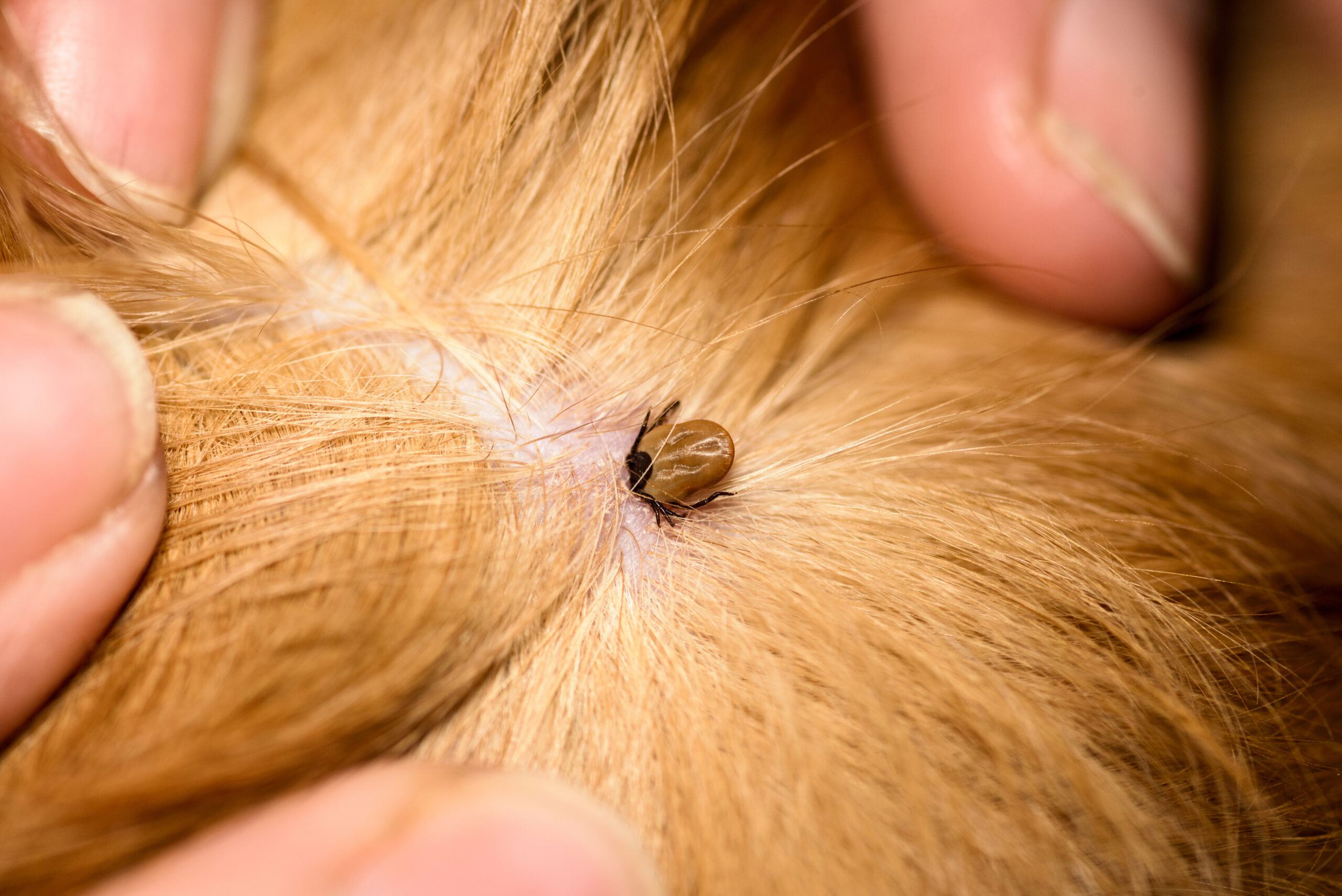I have not dealt with tick problems in many years. But there was a time with Spencer that I was removing them after every walk. Ticks can be a real health threat to both you and your pet, so let’s talk about it.
Tick season varies depending on the region and climate. It starts in the spring and continues through the summer and into fall. In areas with warmer climates, tick season can last year-round. However, peak tick activity usually occurs during the warmer months when ticks are most active and reproducing. In the United States, the peak tick season is typically from April to September.
There are several types of ticks found in different regions of the U.S.
Here are the most common ticks found throughout the country:
- Blacklegged tick (also known as the deer tick): Found primarily in the northeastern and upper midwestern United States, this tick is the primary carrier of Lyme disease.
- American dog tick: Found in most states, this tick is a carrier of Rocky Mountain spotted fever.
- Lone star tick: Found primarily in the southeastern and eastern United States, this tick is a carrier of diseases, including ehrlichiosis and southern tick-associated rash illness.
- Brown dog tick: Found throughout the United States, but most commonly in warm and dry climates, this tick is a carrier of diseases, including Rocky Mountain spotted fever and canine babesiosis.
- Gulf Coast tick: Found primarily in the southeastern United States, this tick is a carrier of diseases, including rickettsiosis and tularemia.
If you live in an area known for ticks, there are things you can do to help protect yourself and your pets from tick bites and tick-borne diseases:
- Keep your yard tidy: Keep your lawn and garden well-maintained and remove any leaf litter or tall grasses, as these areas can attract ticks.
- Use tick prevention products: Talk to your veterinarian about using tick prevention products such as tick collars, spot-on treatments, or oral medications for your pets. These products can help kill ticks on contact or prevent them from attaching to your pet’s skin.
- Wear protective clothing: If you will be spending time in areas where ticks are prevalent, wear long-sleeved shirts, pants, and socks to help protect your skin. You can also tuck your pants into your socks to help prevent ticks from crawling up your legs.
- Use insect repellent: Apply a tick repellent containing DEET to your skin or clothing before going outside, especially in areas where ticks are prevalent.
- Check yourself and your pets for ticks regularly: After spending time outdoors, check yourself and your pets thoroughly for ticks, and remove any ticks you find as soon as possible using proper tick removal techniques.With Spencer I found most ticks on his paws in between his toes and his belly. Make sure you look very carefully between the toes as ticks can be ridiculously small.
What is the best tick removal technique?
First, do not be squeamish about this. I remember my first time; it was not a pleasant experience but by the second day I was a pro at removal.
The best way to remove a tick from your dog is to use a pair of fine-tipped tweezers and follow these steps:
- Grab the tick as close to your dog’s skin as possible with the tip of the tweezers.
- Pull the tick straight out, using steady, even pressure. Do not twist or jerk the tick, as this can cause the mouth parts to break off and remain embedded in your dog’s skin.
- After removing the tick, use a cotton ball with either rubbing alcohol or soap and water and clean the area.
- You need to kill the tick, either by placing it in a little cup with the rubbing alcohol in it or flush it down the toilet.
I used this method but there are other methods, such as using tick removal tools or special tick removal solutions but using fine-tipped tweezers is the most recommended method and has been shown to be effective when done properly.
If you are removing ticks from your dog you need to monitor them for any signs of illness or discomfort.
What happens if your dog is bit by a tick?
If a tick bites your dog, it can lead to a variety of health problems depending on the type of tick and whether it was carrying any diseases. Ticks carry and transmit bacteria or viruses that can cause diseases such as Lyme disease, rocky mountain spotted fever, and ehrlichiosis. The symptoms of these diseases can vary but may include fever, lethargy, joint pain, loss of appetite, and in severe cases, organ failure.
In addition to transmitting diseases, tick bites can also cause local irritation and inflammation. Dogs may develop an allergic reaction to tick saliva, which can cause intense itching, redness, and swelling around the bite area.
Be vigilant during tick season and as always if your pet shows signs of discomfort call your veterinarian.




